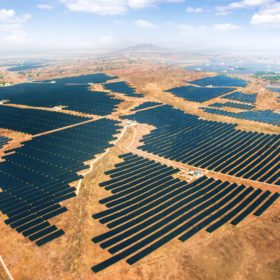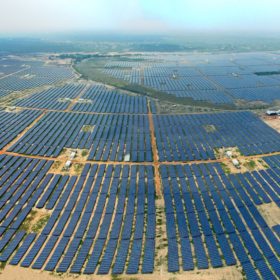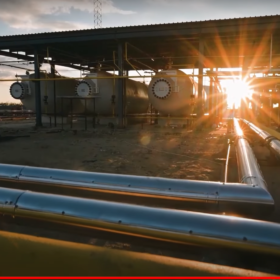India may miss solar PV target, says CEO survey
The country will achieve solar PV capacity of 50 to 75 GW by 2022 – a little over 60% of the 100 GW target. Total rooftop capacity will be less than 10 GW.
By 2030, EVs could outnumber the total vehicles in India today
To smoothen this transition, the country needs to build fast solar PV-powered charging stations. In 2017, there were only 220-250 operational charging stations in India, compared to 56,000 petrol stations.
Azure Power awarded 130 MW solar project
Azure Power has been awarded a 130 MW solar PV project by the Maharashtra State Electricity Distribution Company Limited (MSEDCL). It is expected to be commissioned in 2019.
India announces new policy for wind-solar hybrid systems
India has unveiled a national wind-solar hybrid policy that provides a framework for promotion of large grid connected wind-solar PV systems for optimal and efficient utilization of transmission infrastructure and land, reducing the variability in renewable power generation and thus achieving better grid stability.
Azure Power connects 50 MW project in India
Indian energy company Azure Power recently announced that it has connected a 50 MW PV project in the Indian State of Andhra Pradesh. The company states that the completion of this project brings its portfolio of operational solar assets past the 1 GW mark.
Haryana launches scheme for solar-powered irrigation
In a long-awaited move, farming irrigation systems in Haryana will be powered by solar energy.
RE employs 10.3 million people, solar PV leads charge with 3.4 million jobs – IRENA
According to figures released by the International Renewable Energy Agency (IRENA), there are more than 10 million people working in the renewable energy industry. In 2017 alone, the sector added more than 500,000 jobs globally, up 5.3 % from 2016, with solar PV the biggest employer.
Uncertainty and opportunity loom for renewables sector — report
Uncertainty in the renewable energy sector continues to drive a “relentless focus on cost” to soften the impact of protectionism, subsidy cuts and rising interest rates throughout the world, EY says in its latest Renewable Energy Country Attractiveness Index (RECAI) report. But the evolving outlook for project finance, as well as the gradual maturation of technologies such as blockchain, present new challenges and opportunities.
India: First 1 GW tender for 5 GW solar park expected soon – Interview
The 5 GW PV park, planned for the Dholera Special Investment Region of Gujarat, will become the world’s largest project of its kind, when complete. It is expected to attract an investment of US$3.7 billion and generate employment for more than 20,000 people, says Jai Prakash Shivahare, managing director at Dholera Industrial City Development Limited. He takes time out to speak to pv magazine about the mega solar project.
India slips to 4th place in EY’s attractiveness index for solar PV investments
While China continues to top EY’s Renewable Energy Country Attractiveness Index (RECAI), India has slipped from second position to fourth, due to increasing investor concerns about possible solar import tariffs and disputes between developers and distribution companies.














